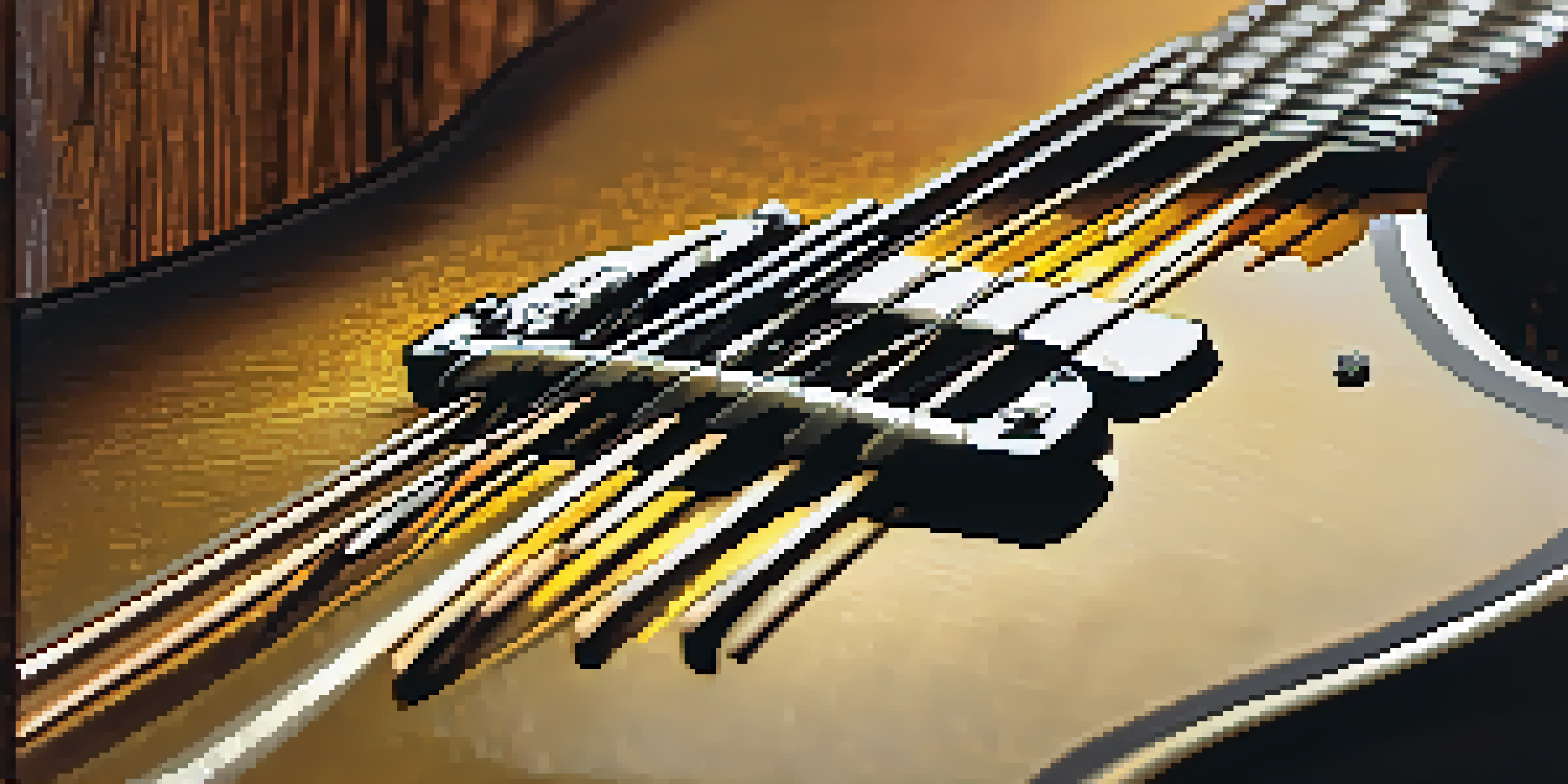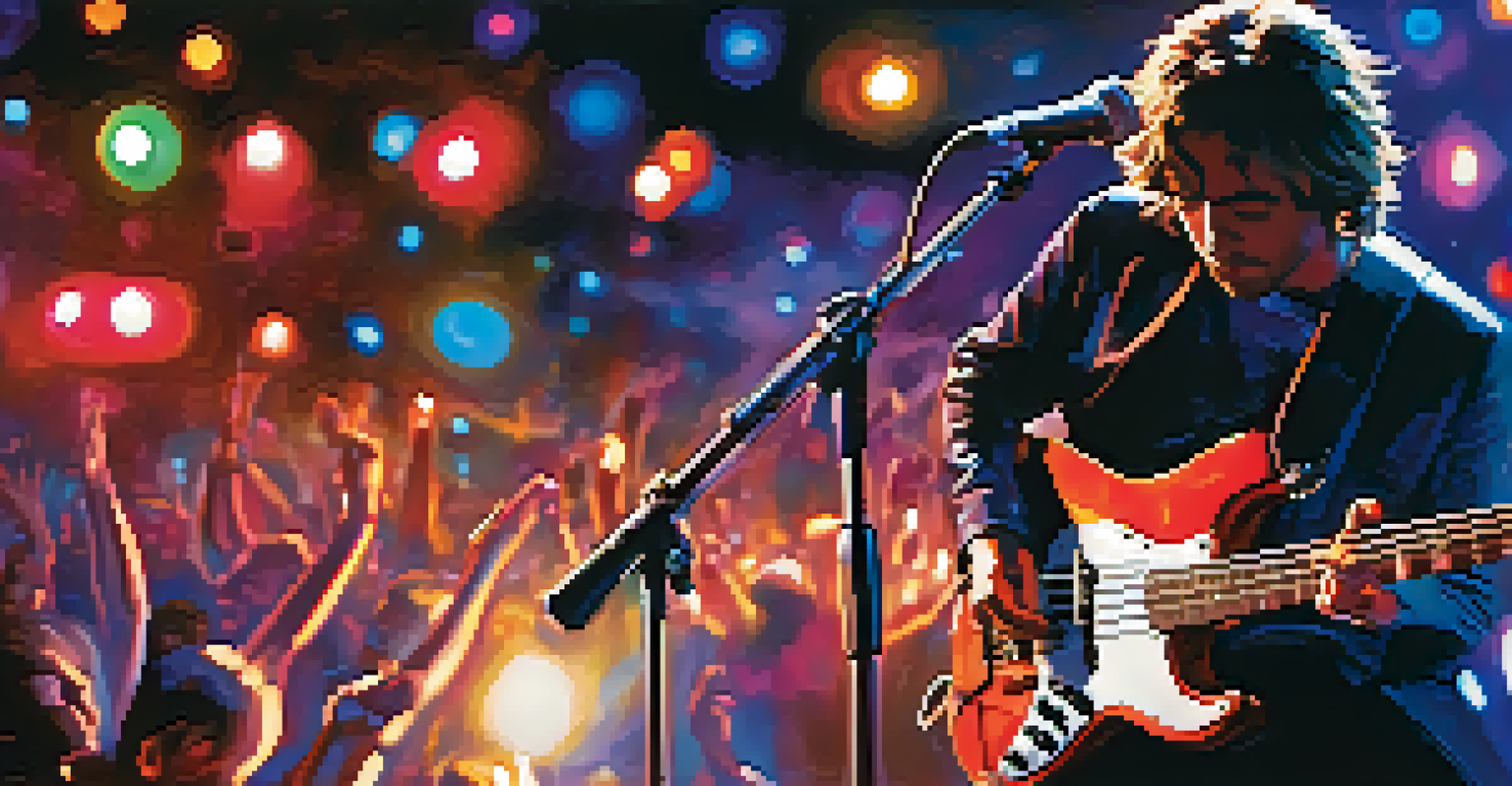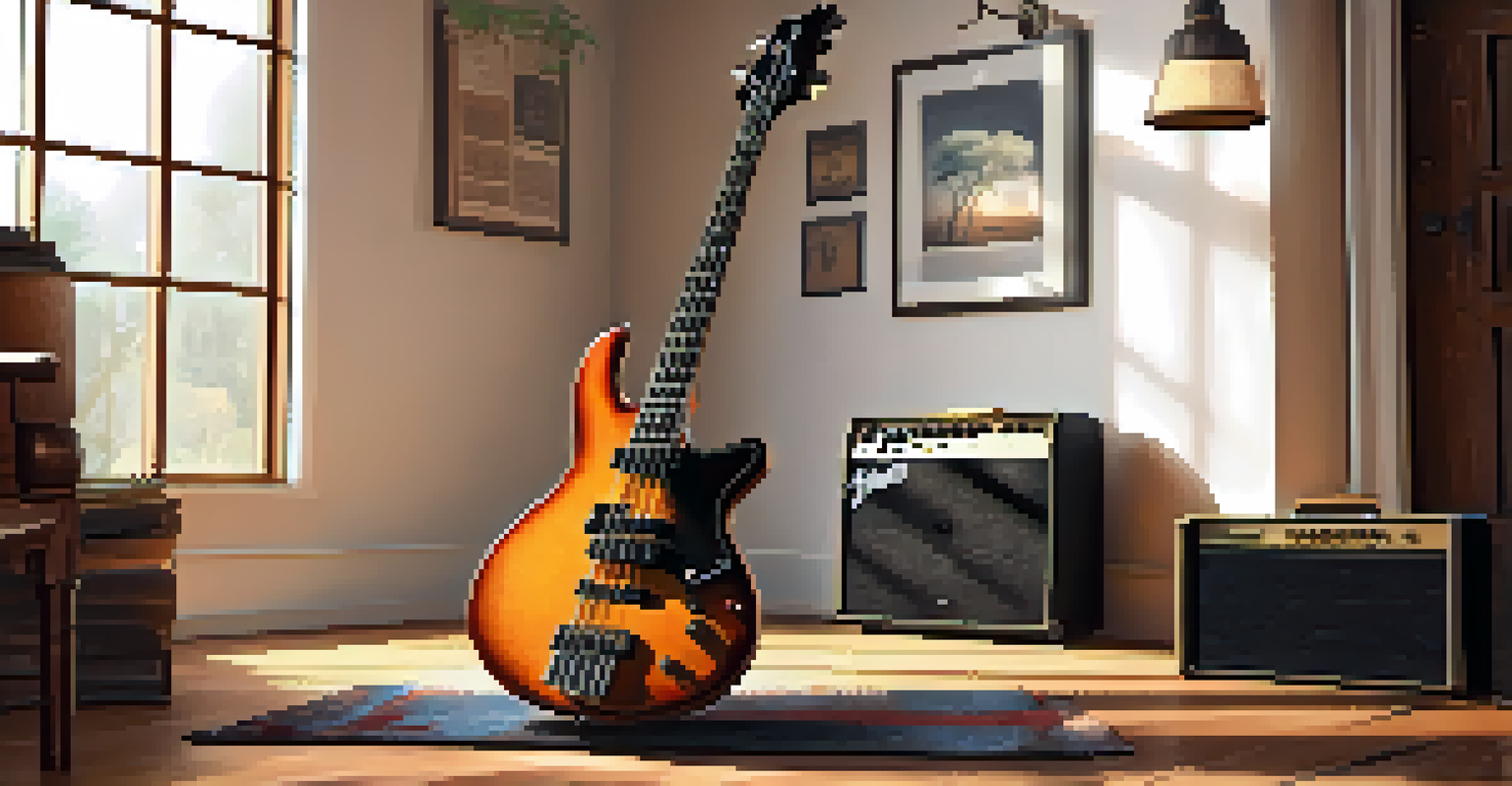The Role of Bass Guitars in Creating Band Rhythms

Understanding the Bass Guitar's Role in a Band
The bass guitar is often overlooked, yet it serves as the backbone of any band. Unlike the lead guitar, which captures the spotlight, the bass creates a foundation upon which the rest of the music is built. This instrument bridges the harmonic and rhythmic elements, ensuring that everything from the drums to the vocals feels cohesive and unified.
The bass guitar is the backbone of the band, providing the harmonic and rhythmic foundation that allows other instruments to shine.
Think of a band like a building; the bass guitar is the sturdy frame that holds everything together. Without it, the structure would feel weak and incomplete. Musicians often refer to the bass as the 'glue' that connects the various parts of a song, allowing each instrument to shine without overpowering the others.
In essence, the bass guitar's role is to provide depth and dimension to the music. It not only keeps the rhythm steady but also enhances the emotional impact of the song, making it an indispensable part of any band.
How Bass Lines Create Rhythm and Groove
Bass lines are the heartbeat of a song, driving the rhythm forward and setting the groove. When a bassist locks in with the drummer, they create a solid rhythmic foundation that invites listeners to move and dance. This synergy is crucial; a well-crafted bass line can elevate a track from good to unforgettable.

For example, think about classic funk or rock tracks where the bass line is instantly recognizable. Songs like 'Billie Jean' by Michael Jackson or 'Come Together' by The Beatles highlight how a compelling bass line can define a song's identity. These lines not only support the melody but also inspire the listener to engage with the music on a physical level.
Bass Guitar: The Band's Backbone
The bass guitar serves as the essential foundation of a band, connecting rhythm and melody while enhancing the overall sound.
Ultimately, the groove created by the bass guitar encourages a rhythmic dialogue between musicians and audiences alike. It's this interplay that makes live performances electrifying, as the bass drives the energy and keeps everyone in sync.
The Bass Guitar: A Link Between Rhythm and Melody
One of the most fascinating aspects of the bass guitar is its ability to bridge rhythm and melody. While it primarily provides rhythmic support, it also plays melodic lines that can complement or contrast with the lead instruments. This dual role enriches the overall sound of the band.
The bass is the bridge between rhythm and melody, giving life and depth to every performance.
Consider how a bassist might play a melodic riff during a chorus, weaving in and out of the main melody sung by the vocalist. This creates a rich tapestry of sound that captivates listeners and adds layers to the music. The bass often finds itself in a unique position, allowing it to enhance both the rhythm and the melody simultaneously.
By seamlessly blending these two elements, the bass guitar contributes to the song's emotional landscape. It can evoke feelings of joy, nostalgia, or even tension, all while maintaining its rhythmic duties, showcasing its versatility in a band setting.
The Impact of Different Genres on Bass Techniques
Different music genres call for different bass techniques and styles, showcasing the instrument's versatility. In jazz, for example, bassists often use walking bass lines that create a fluid and dynamic sound. In contrast, rock bass lines may rely on power chords and driving rhythms to energize the audience.
Reggae music highlights the bass guitar's role even further, often using offbeat rhythms that create a laid-back feel. Here, the bass takes center stage, often playing a crucial role in establishing the genre's signature groove. The unique techniques used across genres illustrate how the bass adapts to fit the musical context.
Groove and Rhythm Through Bass Lines
Compelling bass lines drive the rhythm and create a groove that engages listeners and energizes live performances.
Ultimately, the way bass guitar is played can dramatically affect the overall vibe of a song. Whether it's the intricate fingerpicking in funk or the steady plucking in country, each technique enhances the band's sound and rhythm, proving that the bass is indeed a chameleon of styles.
Famous Bassists Who Shaped Band Rhythms
Throughout music history, several iconic bassists have made significant contributions to the art of rhythm in bands. Legends like James Jamerson and John Entwistle have shaped the way we perceive bass guitar in popular music. Their innovative playing styles have inspired countless musicians and transformed how bass lines are approached.
Jamerson, known for his work with Motown, often played complex lines that added a rich layer of harmony and rhythm. His influence can be heard in hits like 'Ain't No Mountain High Enough.' On the other hand, Entwistle of The Who utilized the bass to create powerful melodies that drove the band's sound, showcasing the instrument's potential beyond mere accompaniment.
These bassists remind us that the role of the bass guitar extends far beyond rhythm; it can also serve as a lead voice in a band. Their legacies inspire new generations of musicians to explore the full potential of the bass guitar in shaping band dynamics.
The Evolution of Bass Guitar Techniques Over Time
The techniques used in playing the bass guitar have evolved significantly over the decades, reflecting changes in musical styles and technology. From the simple plucking of the upright bass to the advanced fingerstyle techniques used in modern rock and pop, the instrument has seen a remarkable transformation. This evolution allows bassists to explore new sounds and rhythms.
For instance, the advent of effects pedals has enabled bassists to experiment with sounds that were once unimaginable. Techniques such as slap and pop, popularized by artists like Flea from the Red Hot Chili Peppers, have added a new dimension to bass playing, allowing for a more rhythmic and percussive approach.
Evolution of Bass Techniques
The techniques used in playing the bass guitar have evolved significantly, reflecting changes in musical styles and innovations in technology.
As music continues to evolve, so too will the techniques used by bassists. The ability to adapt and innovate is what keeps the bass guitar relevant, ensuring it remains a vital component in the ever-changing landscape of music.
The Future of Bass Guitars in Band Music
Looking ahead, the bass guitar will undoubtedly continue to play a crucial role in band music. As genres blend and new styles emerge, the versatility of the bass will allow it to adapt to these changes. Innovations in technology and music production will also influence how the bass is utilized in both live performances and studio recordings.
Moreover, with the rise of home recording and digital music platforms, aspiring bassists have more opportunities to showcase their skills than ever before. This accessibility is leading to a resurgence of interest in the instrument, encouraging new players to explore its rhythmic and melodic capabilities.

Ultimately, the future of bass guitars in band music looks bright. As musicians continue to experiment and push boundaries, the bass guitar will remain a central figure in the rhythm section, ensuring that it continues to shape the sound of music for years to come.